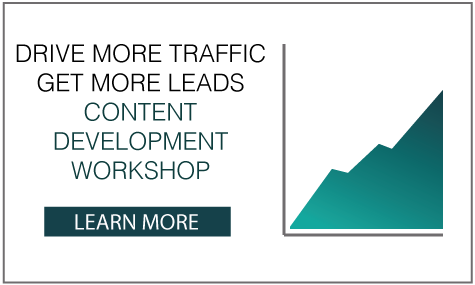Imagine that you’re in a 5-star hotel in a major international city. You swoop in the door, take a seat at the lobby bar, order up a cappucino, whip out your favorite Caran D’ache pen and a Moleskine journal. Just then, from across the room, you see him, the hottest actor of the year. He’s making his way toward you and just as he leans in to slide out a chair opposite, he flashes a smile that lights up the lobby and makes your heart skip a beat. His hand extends warmly to yours, and clasps your hand between both of his, as if you’ve been friends forever. “I’m so delighted we could meet today, I’ve been looking forward to it all week” he says. The glow about you from his effortless ease could melt a candle and you both hit it off like old pals. This is the beginning of a great persona interview!
 Your client is your A-lister. And you’re conducting the interview of a lifetime! Making your prospect feel warm and valued is just the first step of a great Persona Interview. Yes, you’re there to get the story, but you really want THE story, not just the story everyone else gets. You want to get inside your persona’s head, let them tell you their challenges, their frustrations in their lives, including their worklife.
Your client is your A-lister. And you’re conducting the interview of a lifetime! Making your prospect feel warm and valued is just the first step of a great Persona Interview. Yes, you’re there to get the story, but you really want THE story, not just the story everyone else gets. You want to get inside your persona’s head, let them tell you their challenges, their frustrations in their lives, including their worklife.
A great persona interview starts with the questions. Asking a persona a typical marketing question (which is necessary, in most interviews) gets a typical answer. It’s often transactional in nature. But if you ask a question such as “what is your passion in what you do?” you’re likely to get a very different answer. Look for the question that gets to the heart of what they feel about their lives (and how your product or service makes that better is icing on that interview cake.) You have to walk a fine line between a marketing interview and a press interview. A marketing interview celebrates the interviewee; the press interview interrogates the interviewee.
Once you have your question set developed, prepare your interview space. Some interviewees are very uncomfortable being recorded (and it’s critical if you are recording that they know this ahead of the interview.) Often in interviews, our team is recording them only by typing the persona’s answers. This does make for a very fluid transcription that requires immediate review and editing upon conclusion of the interview, but it often puts the interviewee at ease.
If you’re not recording the interview, use a headset, not a speakerphone. Investing in a good headset means you’ll hear the responses from your interviewee without asking them to repeat themselves. Most interviews we do are conducted via phone as it’s less of a perceived time commitment to the persona.
Call in to the prospect at one minute prior to your scheduled time. Many business people are very busy and your early arrival to a meeting may find them grabbing a fresh cup of joe or stopped by a colleague in the hallway. Calling late is disrespectful (one or two minutes late can be excused to not synching clocks, but anything five minutes or longer is cause for a reschedule.)
Open the Interview with the CLAP method. I will credit a good friend who is a professor of Sales and Business Marketing at a state university for this acronym: Confirm, Logistics, Agenda and Permission. This sounds complicated, but it goes something like this: “Good Morning, Sam, thanks for taking this time for our call. It’ll take about 20 minutes to complete and I’ll ask you ten questions. Is this still an OK time for you to do the interview?” You can add other questions such as asking if they mind a recording or to let them know that you are not recording, only transcribing their answers.
Once you have permission, begin the interview. I generally like to ask people easy questions: their name (spelling of their name as well), their position and “how did you get to your current position” career path question. This warms up the opening of the interview. It’s the equivalent of asking your A-lister actor “so, tell me, what led to this iconic role?”
After you’re through the basics, you should be asking your meatiest questions; “what goals do you have for yourself, personally and professionally, this year?” or “what drives you to perform your best at your job?” Asking these meaty questions in the middle, after easier opening questions helps your interviewee get comfortable with the process of being interviewed, more at ease with you.
We close with transactional questions, asking about media habits and usage, and we always keep close tabs on the interview time. If the interviewee is chatty, we remind them that “we have about five minutes left and I have a few more questions, is it OK if we go over our time?” In an interview with a senior executive at a major organization, we asked this question no less than four times, and the interview ran over one hour. The client said he’d never gotten ten minutes of this customer’s time in all his sales efforts over the years and was astounded that we’d gotten an hour of his customer’s time! But if the prospect is aware and accepts this, you respect their time and their opinion.
Our last question is always an “I wish…” question – you can pose it this way “We’re just about at the end of our interview, if you could have anything from XYZ Company that would make your life easy, what would that be?” or you can ask “Is there anything more you wish to share?” This lets your interviewee know that the questions are coming to a close, and often this query elicits very juicy information.
If you’re planning on quoting the client, be sure to get permission and ask if approval is required (it almost always is.) You’re not a reporter, where the news story can take your interviewee’s quotes out of context; this is a marketing favor granted to your client from your interviewee.
Close the interview with AFAC: Affirm, Finalize, Agenda and Close. “Thanks so much, Sam, for participating in this interview. We’ll be using it to develop new marketing content for XYZ Company’s web site. I’ll be back in touch with approvals on your quote. ” Although this is a sales acronym (hence, the “close”), at the close point, simply thank them for being a customer of XYZ Company and conclude the call.
The wrap up is just as important – before any of the interview slips your mind, start at the beginning and fill in the gaps with the transcription (very often, we type exactly what our interviewee has said, including half sentences and odd phrasing – it’s important to take the conversation and make sense of it. Be careful to code any notations as such, and not attribute them inadvertently to your interviewee. Once reviewed (generally this takes about 15 minutes), this raw interview is spell and grammar checked and sent to the customer (if that’s part of your marketing contract.)
We usually follow up with our interviewees a few weeks to a few months later with the quote approval (we do thank them for their time immediately following the call.)
Conducting a great persona interview isn’t just about the questions. Its the way you make the interviewee feel; unlike a media or press interview, which can feel hostile and probing, the persona interview is a great, relaxed interview that is designed to get the prospect talking, as if you were old friends.
Personas are key for developing inbound and content marketing strategies, tactics and content.
Read more about inbound marketing: and what it can do for your business: https://marketingacuity.com/blog/effective-internet-marketing-starts-with-inbound-marketing
*If I were going to interview a celebrity right now, Sam Heugan is the guy I’d want to be interviewing. Photo courtesy Starz Outlander, Getty Images.






